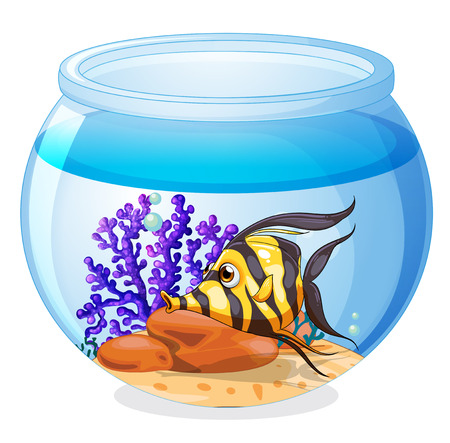1. Choosing the Right Fish for Breeding
Before starting your fish breeding journey, its essential to choose the right species. Not all fish are suitable for home aquarium breeding, and some require special care or conditions to reproduce successfully. Here are some key factors to consider when selecting fish for breeding.
Compatibility
Some fish species are more peaceful and easier to pair for breeding, while others may be aggressive or territorial. Its important to choose species that get along well in a community tank or can be kept in a dedicated breeding setup.
Care Needs
Different fish have different care requirements. Some species need specific water parameters, special diets, or carefully controlled environments to breed successfully. Make sure you understand the needs of your chosen fish before attempting to breed them.
Breeding Difficulty
Certain fish species are easier to breed than others. Beginner-friendly fish tend to breed readily in home aquariums without much intervention, while others require precise conditions or complex breeding behaviors.
Popular Fish Species for Home Breeding
| Fish Species | Compatibility | Care Level | Breeding Difficulty |
|---|---|---|---|
| Guppies | Peaceful, good for community tanks | Easy | Very Easy |
| Mollies | Slightly territorial but manageable | Easy | Easy |
| Bettas | Aggressive; best bred in separate tanks | Moderate | Difficult |
| Corydoras Catfish | Very peaceful, good for community tanks | Easy to Moderate | Moderate |
| Dwarf Cichlids (e.g., Apistogramma) | Semi-aggressive, need careful pairing | Difficult | Difficult |
Selecting the Best Fish for Your Setup
If youre new to breeding fish, its best to start with hardy and prolific breeders like guppies or mollies. These livebearers give birth to free-swimming fry, making them easier to raise compared to egg-laying species that require more specialized care.
If youre interested in more challenging species, such as bettas or dwarf cichlids, be prepared to provide additional care and setup adjustments. Understanding the specific needs of your chosen species will increase your chances of successful breeding.
2. Creating the Ideal Breeding Environment
Setting up the perfect breeding environment is essential for encouraging fish to spawn successfully. A well-prepared tank provides the right water parameters, temperature control, filtration, and decor to ensure a safe and comfortable space for breeding fish.
Water Parameters
Maintaining proper water conditions is crucial for fish breeding. Different species have specific requirements, so its important to research the ideal pH levels, hardness, and ammonia control for your chosen fish.
| Parameter | Recommended Range |
|---|---|
| pH Level | 6.5 – 7.5 (Varies by species) |
| Water Hardness | Soft to moderately hard (Varies by species) |
| Ammonia & Nitrites | 0 ppm (Must be eliminated) |
| Nitrate Levels | <20 ppm (Low levels preferred) |
Temperature Control
The water temperature plays a vital role in triggering spawning behavior. Most tropical fish breed best in slightly warmer water than their normal habitat. Using a reliable heater and thermometer ensures a stable and suitable environment.
General Temperature Ranges for Breeding:
- Tropical Fish: 75-82°F (24-28°C)
- Cichlids: 78-84°F (26-29°C)
- Corydoras & Tetras: 72-78°F (22-26°C)
Adequate Filtration
A good filtration system is necessary to keep the water clean but should not create strong currents that might disturb eggs or fry. Sponge filters are often the best choice since they provide gentle filtration without harming delicate baby fish.
The Right Tank Decor
The correct tank setup encourages natural spawning behavior while protecting eggs and fry from predators. Adding plants, caves, or spawning mops can help fish feel secure and provide safe hiding spots.
Ideal Breeding Tank Decor:
- Aquatic Plants: Java moss, Anubias, Hornwort (great for egg layers)
- Caves & Hiding Spots: Coconut shells, clay pots, or rock formations for cave breeders like cichlids
- Mop Spawners: DIY or store-bought spawning mops work well for killifish and some tetras
- Smooth Surfaces: Flat rocks or glass panels for egg scatterers like angelfish and discus
A carefully designed breeding environment increases the chances of successful reproduction while ensuring the health and safety of both adult fish and their offspring.

3. Understanding Fish Breeding Behaviors
Successfully breeding fish in a home aquarium starts with understanding their natural behaviors. Different species have unique ways of courting, spawning, and caring for their offspring. By recognizing these behaviors, you can create an environment that encourages healthy reproduction.
Common Breeding Behaviors
Fish exhibit a variety of breeding behaviors depending on their species. Some display elaborate courtship rituals, while others may lay eggs in hidden spots or even carry their young in their mouths.
Courtship Displays
Before spawning, many fish engage in courtship behaviors to attract a mate. These displays may include:
- Color Changes: Some fish develop brighter colors to signal readiness to breed.
- Fin Flaring: Males often spread their fins wide to appear more attractive.
- Dancing or Chasing: Fish may perform swimming patterns or gently chase each other.
- Nest Building: Certain species, like bettas and cichlids, build bubble nests or dig pits for eggs.
Spawning Methods
Different fish reproduce using various spawning methods. Knowing how your fish spawn will help you provide the right conditions for successful breeding.
| Spawning Method | Description | Examples |
|---|---|---|
| Egg Scatterers | Females release eggs while males fertilize them in open water. No parental care is provided. | Tetras, Barbs, Goldfish |
| Bubble Nest Builders | Males create floating bubble nests where eggs are placed and protected until hatching. | Betta Fish, Gouramis |
| Mouthbrooders | One parent (usually the female) carries fertilized eggs in their mouth until they hatch. | African Cichlids, Arowanas |
| Substrate Spawners | Eggs are laid on rocks, plants, or inside caves where parents may guard them. | Cichlids, Angelfish, Catfish |
| Livebearers | The female gives birth to free-swimming fry instead of laying eggs. | Guppies, Mollies, Platies |
Parental Care Variations
The level of parental involvement also varies among species:
- No Parental Care: Many egg scatterers leave their eggs unattended after spawning.
- Partial Care: Some species guard their eggs but do not care for the fry after hatching.
- Full Parental Care: Mouthbrooders and certain cichlids actively protect and raise their young.
How Understanding Behavior Helps You
By recognizing these breeding behaviors, you can make adjustments to your tank setup, water conditions, and diet to support successful reproduction. Providing hiding spots for egg layers or ensuring enough space for territorial breeders can greatly improve breeding success rates in your home aquarium.
4. Caring for Fish Eggs and Fry
Once your fish have spawned, its essential to take the right steps to protect the eggs and ensure the survival of the newly hatched fry. Proper care during this stage will significantly impact their chances of growing into healthy adult fish.
Protecting Fish Eggs
Fish eggs are vulnerable to predation from other fish, including their own parents. Some species may even eat their eggs if left unattended. To improve survival rates, consider these protective measures:
- Use a Breeding Box or Separate Tank: Moving the eggs to a dedicated breeding tank or using a breeding box within the main aquarium can keep them safe from predators.
- Add Gentle Filtration: A sponge filter provides necessary water circulation without creating strong currents that could dislodge or harm the eggs.
- Maintain Clean Water Conditions: Perform small, frequent water changes to prevent fungal growth and keep ammonia levels low.
Preventing Fungus and Disease
Fungal infections can quickly spread among fish eggs, leading to high mortality rates. Here are some ways to prevent it:
| Prevention Method | Description |
|---|---|
| Methylene Blue Treatment | Add a small amount of methylene blue to the water to help prevent fungal infections. |
| Adequate Water Flow | A gentle water current helps oxygenate eggs and prevents fungus buildup. |
| Remove Unfertilized Eggs | Unfertilized eggs turn white and can develop fungus, so remove them as soon as possible. |
Caring for Newly Hatched Fry
Once the eggs hatch, the fry will need proper nutrition and a safe environment to grow strong. Their initial days are critical for development.
Providing Proper Nutrition
The first food you provide should be small enough for them to eat easily. Consider these feeding options based on their developmental stage:
| Fry Age | Recommended Food |
|---|---|
| 0-3 Days | Nutrient-rich yolk sac (absorbed naturally) |
| 3-7 Days | Infusoria or liquid fry food |
| 1-2 Weeks | Baby brine shrimp or finely crushed flakes |
| >2 Weeks | Larger live foods like microworms or finely ground pellets |
Caring for Fry in Their Growing Environment
- Avoid Strong Filtration: Use a sponge filter or air-driven filter to prevent fry from getting sucked into the system.
- Create Hiding Spaces: Live plants like Java moss provide shelter and encourage natural behavior.
- Monitor Water Quality: Keep ammonia and nitrite levels at zero by performing frequent but gentle water changes.
- Avoid Overcrowding: As they grow, transfer some of the fry to larger tanks to prevent stunted growth due to limited space.
Caring for fish eggs and fry requires patience and attention, but with proper protection, nutrition, and maintenance, you can successfully raise healthy young fish in your home aquarium.
5. Common Challenges and Troubleshooting
Breeding fish in a home aquarium can be a rewarding experience, but it also comes with its own set of challenges. Understanding these potential issues and knowing how to address them can help ensure a successful breeding process.
Aggression Among Fish
Aggression is one of the most common problems in a breeding tank, especially among territorial or competitive species. Some fish may become overly aggressive towards their mates or other tank inhabitants, leading to stress or injury.
How to Manage Aggression:
- Provide Hiding Spots: Use plants, caves, or decorations to create hiding areas where fish can retreat if needed.
- Monitor Behavior: If aggression becomes severe, consider separating the aggressive fish into another tank.
- Select Compatible Pairs: Some species are more aggressive than others; research your fish’s behavior before pairing them for breeding.
Infertility Issues
If your fish are not breeding successfully, infertility could be an issue. This can be caused by poor water conditions, improper diet, or incompatible pairings.
Ways to Improve Breeding Success:
- Check Water Parameters: Ensure that temperature, pH levels, and water quality meet the specific needs of your fish species.
- Provide a Nutritious Diet: High-quality food rich in protein can improve fertility and overall health.
- Select Healthy Breeding Pairs: Choose mature and healthy fish with no signs of illness or deformities.
Health Concerns
Disease and poor health can negatively impact breeding success. Common health issues include fungal infections, parasites, and stress-related illnesses.
Preventing and Treating Health Problems:
| Health Issue | Symptoms | Treatment |
|---|---|---|
| Fungal Infections | Cotton-like growths on fins or body | Treat with antifungal medication and maintain clean water conditions |
| Parasitic Infections | Scratching against objects, weight loss | Use parasite-specific treatments and quarantine affected fish |
| Stress-Related Illnesses | Lethargy, loss of appetite, faded colors | Reduce environmental stressors like sudden temperature changes or overcrowding |
Poor Parental Care
Some fish species eat their own eggs or fry, while others may not provide any care at all. This can lead to low survival rates for young fish.
Solutions for Poor Parental Care:
- Use a Breeding Tank: Separating the breeding pair from other fish can reduce stress and protect eggs.
- Remove Eggs or Fry: If parents are known egg-eaters, consider moving eggs or fry to a separate rearing tank.
- Add Floating Plants: Some species prefer to lay eggs among plants that provide natural cover and protection.
Troubleshooting common breeding challenges requires patience and careful observation. By addressing aggression, infertility, health concerns, and parental care issues proactively, you can increase the chances of a successful breeding experience in your home aquarium.


